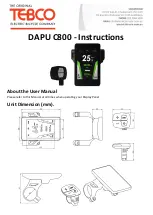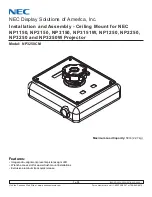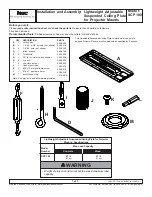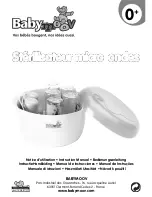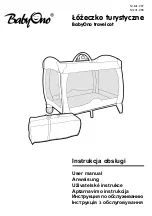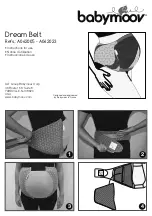
18
Section 2: Operating Instructions
AP-SR2672, & AP-SR2690 for Skid Steer Powered Rakes 321-004MK
4/10/19
General Operating Instructions
First completely familiarize yourself with the Operator’s
Manual! Then complete the Operator’s checklist,
properly attach the Powered Rake to your skid steer, and
make the initial depth setting, level settings, and roller
angle adjustments. After completing the above, you will
need to perform operational safety checks. Choose a
work site and make any final adjustments before using
your Kubota Powered Rake.
It’s now time for a running operational safety check. Make
certain that the loader’s park brake is engaged, auxiliary
hydraulics are disengaged, and the Powered Rake is
resting on the ground. Start the loader and back off
engine rpm to approximately one-quarter throttle. Using
the hydraulic lift control, lift the Powered Rake about half
way off the ground and then engage auxiliary hydraulics.
Increase throttle speed if everything is running smoothly
until you have reached full operating speed. Never
engage the auxiliary hydraulics at full engine rpm.
Damage to the rake driveline and/or rake could occur.
To make final adjustments, choose a work site that is dry
and allows you to make at least a 50 ft. straight run. Raise
the Powered Rake half way off the ground, disengage the
loader auxiliary hydraulics, release the park brake, and
travel to your starting point. Travel speed should be
between 3 and 5 mph and the rake height should be
positioned for best road view.
Once at the site, idle the loader engine, engage the
auxiliary hydraulics, and then increase engine speed
until the loader is at full operating speed. Begin traveling
forward while gently lowering the running Powered Rake
to the ground. Make slight changes to the loader’s ground
speed as you travel forward to determine the desired
ground finish. Generally, a slower speed results in a finer
finish, while a higher speed results in a coarser finish.
Excessive ground speed may result in dirt or material
passing over the top of the material control deflector or
too much material being windrowed off to the side.
Powered Rakes do not perform well in wet sticky soil and
making sharp turns when in contact with the ground.
Normal operating rake angle is 15 degrees left or right.
However, you may want to make subtle auxiliary
hydraulic adjustments to the roller angle to determine
varying effects on the surface finish. The side plates can
be taken out of storage position and installed to create a
box blade effect which will greatly assist in filling in low
spots and depressions.
You can also vary the effect on the surface finish by
setting the material control deflector height above the
roller. The material control deflector sifts out clods, rocks,
and other debris as the soil passes over the top of the bar
roller. Adjusting the blade down decreases the gap
between the deflector and roller and will sift out more
objects for a finer soil finish. Adjusting the blade up allows
more clods, rocks, and debris to pass over the roller and
produces a coarser soil finish.
Set the working depth and level the rake at the caster
gauge wheels and not with the loader. Normally a 1"
cultivation depth is considered ideal for a surface finish.
Make adjustments to the working depth if too many rocks
or excessive debris pass under the roller by changing the
C-spacers on the gauge wheel spindles. Increase
working depth by moving the spacers from below the
support arms to above the support arms. Decrease
working depth by moving the spacers from above the
gauge wheel support arms to below the support arms.
The Powered Rake should also be set to operate level. It
has a tendency to go in deeper on the driveline side (left
side) because that is the heavy side of the rake.
Compensate for this by changing the C-spacers on the
right gauge wheel so that it is set approximately 1"
deeper than the left gauge wheel.
After you have traveled 50 feet, properly shut down the
skid loader and Powered Rake to inspect the finish and
determine what, if any, additional adjustments need to be
made. Check for any foreign objects that may be
wrapped around the roller or lodged between the studs.
Remember that the right finish is achieved through a
combination of proper soil moisture conditions, operating
depth, ground speed, material control deflector opening
and roller angle. Your Powered Raking capabilities will
improve rapidly with experience.
If attachment is to be operated in reverse, make sure
visibility to the rear of the power unit is appropriate for the
attachment. Backup camera or mirror is recommended.
Maintain cleanliness of lens or mirror.






























